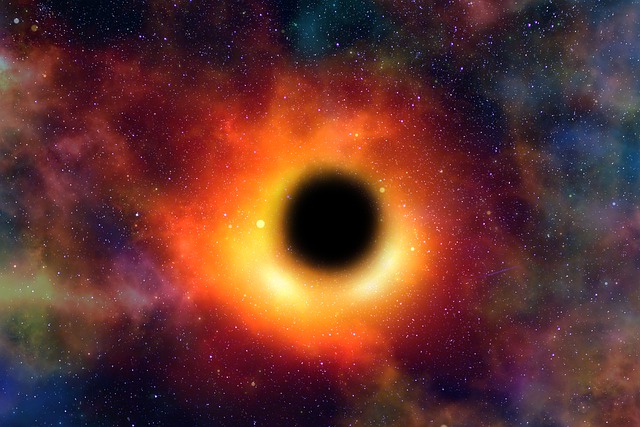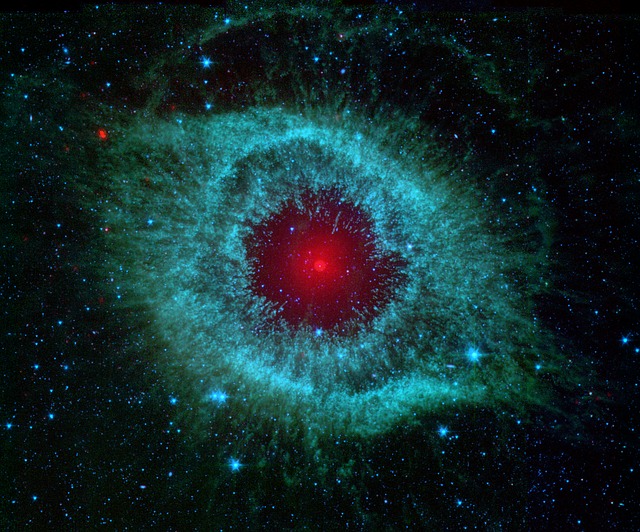*This post may contain affiliate links. This means we may make a commission if you purchase an item using one of our links*
The main difference between a black hole and nebula is that black holes form after a massive star goes supernova and the remnants from that supernova collapses into itself creating a dark energy disc whereas nebulae are simply the cloud a dust remnants that remain after the explosion and tend to stick around for 20 million years on the upper end.
With that being said both entities do showcase many more differences than what had been mentioned above so continue reading to get a more thorough breakdown of any other differences.
What Is A Black Hole?
Table of Contents

A black hole is created when a large star about 4 solar masses large collapses below its Schwarzschild radius causing a supernova explosion. The density of the star creates a massive gravitational pocket and pulls everything within its vicinity into it.
The edge of a black hole is known as the event horizon and once something crosses this point, there is no escape. The gravitational pull of a black hole is so immense that even light is sucked inside.
All objects pulled in are subjected to an unimaginable crushing gravitational force as they are pulled toward the super dense end point of the black hole known as the singularity.
Black holes can be split into a variety of different types such as a supermassive black hole, intermediate mass black hole, and stellar mass black hole.
Stellar mass black holes are formed as described above by the death of a large star collapsing inward on itself. An intermediate mass black hole is slightly larger than a stellar mass black hole and may form be acquiring stars within its reach although not many have been discovered so little is still known about them.
A supermassive black hole can be found at the center of a galaxy and consumes stars and smaller black holes in order to obtain its massive size – millions of times larger than our Sun.
What Is A Nebula?

A nebula is a giant gas and dust cloud which can be observed in outer space. They are either present when forming new stars or when a supernova explosion occurs, leaving behind this dust cloud remnant.
There are other less violent ways nebulae are formed but, in most instances they form once a star is about to die.
Just like the components of their dead star counterparts these dust clouds will be made out of the elements hydrogen, helium and a number of other ionised elements spread across their local region of space.
Therefore, based on this fact and how stars are mostly comprised of those two core elements, stars can be formed when dust cloud surroundings clump together.
When stars are being formed, the dust clouds will start to clump together, making the gravity around these regions stronger and drawing even more dust clouds towards itself.
This process essentially occurs until the gravity becomes so intense that it causes the clumped dust clouds to collapse into itself.
The dust in the center will star heating up producing the first phase of a new star, called a protostar and from there will become either a main sequence star like red dwarfs, yellow dwarfs (like our Sun) among other variations.
They can also become a failed brown dwarf star too if everything doesn’t go to plan.
Nebulae don’t live for an extreme amount of time in space where planetary nebulae like the helix nebula for example is projected to last for around 20,000 years near its top end.
Can A Black Hole Swallow A Nebula?
Black holes have amongst the strongest gravitational pulls in the known universe therefore, in theory it makes sense that black holes could swallow uo entire nebulae.
With that being said, the size of the black hole and the distance that separates the two will also determine how easily they’ll capture the clumps of dust into their domain.
If say the black hole is big enough and if the distance between the two celestial entities are in range, the nebula clouds will be consumed by the black hole. The black hole spaghettify the nebula as it slowly dissolves into the singularity of the black hole.
The same principle applies for stars and other interstellar objects that fall within a black hole’s spaghettifying range.
Similarities Between Black Holes And Nebulae
One of the main similarities between the two is that both form when stars die.
Other than this, the two are genuinely very different from each other, whether it be their composition, mass, so on and so forth. Of course that’ll be broken down in more detail below.
Differences Between Black Holes And Nebulae
As for the differences between a black hole and nebula, they include the following:
- Black holes are the darkest densest entity in the universe whilst nebula aren’t nearly as dense and are just a collection of a dead stars dust and clouds.
- Black holes will not allow any light to escape it if it falls within its event horizon whilst nebulae do not affect the light around them in the same way.
- Black holes can live for far longer than nebula, where planetary nebula only live for around 20,000 years on the top end of their lifespan whilst other nebula have at most stuck around for 20 million years (Carina Nebula for example).
- Black holes will only form when a larger star that is 20+ solar masses goes supernova whilst nebulae can form no matter how big the star. As long as they die, nebula clouds will remain.
- Nebula are composed of mostly helium and hydrogen whilst black holes are made of dark energy.
- Black holes can dilate space and time around them whilst nebula dust clouds cannot.
- Nebulae can form stars within itself when clumps of the dust gain size whereas black holes cannot create new stars.
- Black holes can consume stars to grow in size.
- Black holes can be billions of kilometers in size whereas the largest nebula called the Tarantula nebula is roughly 1,800 light years across which would make it significantly larger than the largest known supermassive black holes.
Summary
Black holes are celestial objects that will likely remain in space until the known universe dies or certainly long enough for a quadrillion+ black holes to form whereas a nebula will even eclipse that in terms of the amount that will be produced.
All in all nebulae are completely different from black holes, whether it be their composition, their size and most certainly their lifespan so, even if they form in much the same way, they function distinctly from one another.

